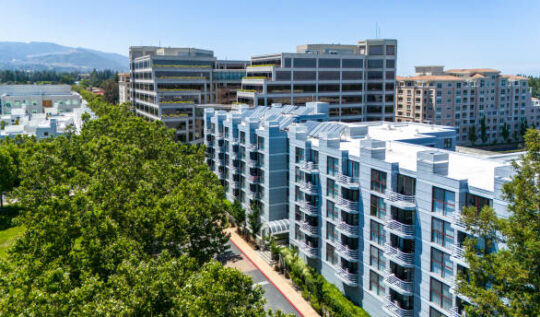California Housing Bills – Comprehensive Overview & Analysis by JDJ Consulting Group
California housing bills and crisis aren’t new—but 2025 is shaping up to be a major turning point.
From Los Angeles to San Diego, developers have long struggled with a tough mix of rising construction costs, zoning delays, and environmental regulations. At JDJ Consulting Group, we work with property owners, investors, and development teams navigating these very roadblocks every day. And we can confidently say: the latest round of housing bills in California is one of the most impactful in years.
So, what’s changed?
In mid‑2025, Governor Gavin Newsom signed a sweeping package of housing reforms aimed at cutting red tape, speeding up permitting, and encouraging more infill housing near transit. From CEQA exemptions to housing element enforcement, these changes give developers new tools—but also introduce new rules.
In this guide, we break down the most important California housing bills passed in 2025, explain what they mean for your next project, and show how JDJ helps you stay ahead in this shifting landscape.
📅 What Developers Need to Know in 2025
| Policy Area | 2025 Updates | Impact on Projects |
|---|---|---|
| CEQA Exemptions | Expanded for infill and affordable projects | Faster approvals with fewer delays |
| SB 35 (via SB 423) | Enforced more broadly across cities | Reduces red tape for compliant projects |
| Affordable Housing Bonuses | Bonus density and relaxed setbacks | Increases yield, lowers costs |
| Permit Timelines | Mandated shorter response periods | Keeps projects moving on schedule |
Table of Contents
ToggleUnderstanding CEQA: What It Is and Why It Matters to Developers
The California Environmental Quality Act (CEQA) has been one of the biggest pain points in real estate development for decades. It’s meant to protect the environment—but in practice, it’s often used to slow or block much-needed housing.
If you’ve ever been stuck in a project review that dragged on for months—or worse, ended in litigation—you’ve likely encountered CEQA.

What CEQA Does:
Requires environmental review (like EIRs or MNDs) for certain developments
Applies even to infill projects in already developed urban areas
Can be challenged in court, delaying approvals or increasing project risk
At JDJ Consulting Group, we’ve helped clients across Los Angeles, the Valley, and the Inland Empire navigate CEQA hurdles. We understand when a full review is needed—and when you might qualify for exemptions or streamlining.
Big Changes: What the 2025 CEQA Reforms Mean for Infill Housing
The good news? California just made major changes to CEQA through two new laws: AB 130 and SB 131, both signed in June 2025. These bills aim to fast-track “infill” housing near jobs and transit by removing key CEQA barriers.
Here’s a breakdown of what’s new:
Table 1: How AB 130 and SB 131 Change CEQA for Urban Housing
| Feature | Before 2025 | After AB 130 & SB 131 |
|---|---|---|
| CEQA Exemptions for Infill | Very limited | Broadened to include more projects |
| Review Timeline | Flexible; often delayed | 30‑day deadline for qualifying projects |
| Legal Challenges | Frequent and open-ended | Restricted for exempted projects |
| Height Thresholds | Typically under 55 ft | Up to ~85 ft in transit zones |
| Wage Standards | Not always required | Mandatory prevailing wage in most cases |
These changes apply to what the law calls “housing-rich areas”—urban zones near schools, jobs, and transit. If your site qualifies, your project may now:
Avoid full CEQA review
Be immune from lawsuits under CEQA
Be reviewed faster by agencies with a 30-day clock
We help clients figure out exactly where their property stands under the new law and how to maximize this opportunity.
Which Projects Qualify for CEQA Exemptions in 2025?
Not all developments will benefit from the new CEQA rules. Your project must meet specific conditions to qualify.
Table 2: Key Criteria for CEQA Exemption Under AB 130
| Requirement | Must-Have Details |
|---|---|
| Project Location | In a “housing-rich” or “infill” area near transit |
| Height | Up to 85 ft (roughly 7–8 stories) |
| Density | At least 30 units/acre (urban areas) |
| Affordability | Some affordability or fee contribution required |
| Labor Standards | Must use prevailing wage for all construction trades |
| Compliance with Zoning | Must meet all objective zoning and design standards |
| Site History | No recent industrial or contaminated use |
If you’re not sure whether your project meets these conditions, that’s where JDJ comes in. We provide a detailed site and zoning analysis upfront—so you know if your parcel qualifies before you spend money on consultants or plans.
Permit Streamlining and Local Government Deadlines: What You Need to Know
For years, delays in local permitting have slowed down housing across California. Even when a project met all zoning and design rules, approvals could take months—or even years.
That’s now changing.
In 2025, the state passed new rules that force cities and counties to speed things up. This includes updates to the Permit Streamlining Act, AB 253, and even budget trailer bills that went into effect in July.
Here’s what’s different in 2025:
Local governments must act faster on qualifying housing projects
Developers can now hire third-party reviewers if cities take too long
The number of public hearings is capped for certain projects
These changes give developers more control over their timelines—and JDJ helps you use these new tools to your advantage.
When Can You Use Third-Party Reviewers Under AB 253?
If a city fails to act on your complete application within 30 days, AB 253 gives you a backup option. You can hire a certified third-party reviewer to do the job instead. Their approval counts the same as one from the city’s planning department.

This is especially useful in overburdened cities like Los Angeles, San Jose, or Oakland, where delays are common.
JDJ’s consultants help clients track timelines and file notices that trigger third-party review rights. We work with licensed reviewers to keep your approvals moving.
Capping Public Hearings and Appeals: A Game-Changer for Builders
Another new rule limits the number of public hearings a city can hold on a housing project. For most projects:
Only five public hearings can be held
Appeals must follow strict timelines
Subjective design or neighborhood input can’t override objective standards
This matters because long public review processes have killed many infill projects in the past—especially ones near transit or in high-opposition areas.
With this new cap, JDJ helps you:
Prepare strong initial application packages
Limit the chance of deferrals or hearing continuances
Focus only on what’s required by law
Where JDJ Adds Value in This New Landscape
Permitting doesn’t just depend on paperwork. You need strategy, timing, and deep knowledge of how local agencies work.
Here’s how JDJ Consulting Group supports clients under the 2025 streamlining rules:
| Service Area | JDJ’s Support |
|---|---|
| Timeline Management | We track every filing date and response deadline |
| Permit Expediting | We coordinate directly with agencies to reduce lag |
| CEQA Status Analysis | We flag eligibility for AB 130 exemptions or mitigated paths |
| Public Hearing Prep | We handle strategy, speaker prep, and submission materials |
| Third-Party Review Triggering | We help you invoke AB 253 rights when cities miss deadlines |
What This Means for Developers and Investors
With state law now on your side, time is no longer just in the city’s hands.
You can:
File confidently knowing your project won’t be stalled indefinitely
Save months in review and resubmittals
Rely on outside experts when cities fall behind
And with JDJ as your partner, you don’t have to guess whether these rules apply to you—we map it out from the start and manage the process every step of the way.
Housing Element Enforcement and Fair Housing Rules Every Builder Should Know in 2025
Even with CEQA and permitting reforms, one thing hasn’t changed—if a city’s housing element isn’t certified, developers face delays.
California’s housing element laws require each city and county to plan for enough housing—market-rate, moderate, and affordable. But many cities missed the mark in recent years. As a result, the state passed several new laws in 2025 to hold them accountable.
This is good news for builders. If a city is out of compliance, it can lose control over local land-use decisions—and your project might qualify for “builder’s remedy” or fast-track review.
What Is a Housing Element, and Why Should Developers Care?
A housing element is part of a city’s General Plan. It outlines how and where new homes will be built. It must:
Include zoning for enough housing across income levels
Identify realistic development sites
Be reviewed and certified by California’s Department of Housing and Community Development (HCD)
🏗️ Housing Streamlining Tools in California – What You Can Use
| Tool | Legal Source | Key Benefit |
|---|---|---|
| SB 35 Streamlining | Senate Bill 35 | Bypasses CEQA for qualifying projects |
| AB 2011 By-Right | Assembly Bill 2011 | Speeds up affordable housing on commercial land |
| CEQA Exemptions | AB 130 / SB 131 | Waives reviews for certain infill & emergency projects |
If a city’s housing element is rejected or expired, that city loses certain powers—and developers gain new leverage.
Key 2025 Housing Bills: AB 650, SB 786, and AB 906
Here’s a quick summary of the new rules:
| Bill # | What It Changes |
|---|---|
| AB 650 | HCD must now provide written explanations when rejecting a housing element draft |
| SB 786 | Strengthens legal grounds to sue cities that block housing or delay updates |
| AB 906 | Requires fair housing across all neighborhoods—not just in low-income areas |
Together, these laws make it harder for cities to delay, hide behind zoning tricks, or push affordable housing into segregated districts. They also add teeth to affirmatively furthering fair housing (AFFH) rules.
How JDJ Helps You Navigate Housing Element Rules
This landscape can be tricky. You need to know:
If your city is compliant or under state review
If your site is listed as a “realistic” development location
If you can use the builder’s remedy to bypass zoning limits
JDJ Consulting Group stays on top of the HCD certification status across all major jurisdictions. We help clients:
Select sites in cities that are out of compliance
Confirm site eligibility for state-backed approvals
Prepare project proposals that align with fair housing standards
We’ve helped clients successfully propose mixed-income housing in both high-resource and transit-priority neighborhoods—without getting bogged down in outdated zoning laws.
What to Watch For: Fair Housing Trends and Enforcement in 2026
The state is cracking down on cities that concentrate affordable housing in less desirable areas. This means more emphasis on:
Spreading projects across high-opportunity zones
Ensuring density bonuses are used responsibly
Requiring public data and transparency in site selection
For developers, this can be an opportunity—especially when paired with programs like AB 2011, which supports residential conversions on underused commercial corridors.
JDJ works with landowners, planners, and housing advocates to ensure projects not only meet state goals—but move forward without costly legal challenges.
Affordable Housing Bonds and Financial Tools: What Developers Need to Know in 2025 and Beyond
Even with zoning approvals and CEQA exemptions, one question remains: how will your project be financed?
California’s 2025 housing legislation doesn’t just remove legal hurdles—it also introduces new funding tools. These help developers cover costs, meet affordability requirements, and even reduce CEQA impacts through creative financing.

If you’re building in California, especially in cities like Los Angeles or Oakland, these tools can make or break your project.
What Is the Affordable Housing Excess Equity Program?
Signed into law in 2025, this new program lets the state reinvest equity returns from existing affordable housing into future projects.
Here’s how it works:
The state earns returns from its past investments in affordable housing
Those gains are funneled into a revolving fund
The fund then helps finance new housing—especially rental and supportive housing
If you’re developing below-market-rate units, this could be a future source of gap financing.
The CEQA VMT Mitigation Bank: A Creative Way to Offset Environmental Impacts
Another innovation is the Vehicle Miles Traveled (VMT) Mitigation Bank.
This tool allows developers to pay into a fund instead of physically reducing car trips on-site. The state then uses that money to:
Build affordable housing near transit
Improve bike, bus, or rail infrastructure
Create compact, climate-friendly neighborhoods
If your project triggers CEQA review based on VMT impacts, this option can save time and money—while supporting state housing goals.
Looking Ahead: The $10 Billion Housing Bond (SB 417)
California lawmakers are also preparing a $10 billion statewide housing bond, which could appear on the 2026 ballot. If passed, funds will go toward:
New affordable housing construction
Preservation of aging units
Infrastructure to support infill development
This won’t affect current projects just yet—but it signals strong, long-term state support for development.
Where JDJ Consulting Group Fits In: Funding Strategies That Work
Navigating public funding isn’t easy. There are strict rules, competitive timelines, and overlapping agencies.
JDJ helps clients:
Identify eligibility for local and state-level incentives
Align projects with HCD, SCAG, and Metro goals
Coordinate with nonprofit housing partners or mission-driven investors
Understand how CEQA mitigation and bond funding can work together
Whether you’re applying for tax credits, seeking entitlement for affordable units, or looking to offset environmental costs, we help you move smartly through the system.
Table: Financial Tools for Developers in 2025
| Tool / Program | How It Helps You | Who Should Use It |
|---|---|---|
| Affordable Housing Equity Program | Adds funding for below-market units | Affordable and mixed-income builders |
| VMT Mitigation Bank | Offers alternative CEQA mitigation path | Infill and transit-adjacent projects |
| Proposed $10B Housing Bond (SB 417) | Future source for development and infrastructure grants | Mid to large-scale developers |
| Local & State Grants | Bridges funding gaps for affordable or hybrid housing models | Projects needing layered financing |
How JDJ Navigates Transit-Oriented and Infill Housing Projects in a Post-2025 Legal Landscape
Infill housing has always been a priority in California’s planning goals—but 2025 laws have now made it the fastest path forward for developers.
If your property sits near a transit stop, in a high-opportunity neighborhood, or on underused commercial land, you may now qualify for multiple state-backed advantages. These include CEQA streamlining, height and density bonuses, and faster approvals.
At JDJ Consulting Group, we specialize in turning this new legal landscape into real development results—especially for transit-oriented development (TOD)and urban infill projects.
What Qualifies as a Transit-Oriented Project in 2025?
State law uses the term “housing-rich” or “transit-priority” areas to describe places that can support dense housing due to their proximity to public transportation.
To qualify under the new rules, your site must typically:
Be within ½ mile of a major bus or rail stop
Be in an existing urbanized area
Meet minimum density and height thresholds (e.g., 30 units per acre, up to 85 ft)
If you check these boxes, your project may be eligible for:
CEQA exemption under AB 130
Density bonuses or parking reductions
Priority processing under SB 35 or local TOD ordinances
How JDJ Helps You Maximize TOD Benefits
It’s not enough to be near a bus stop. You need to prove your eligibility, meet objective zoning criteria, and package your application correctly. That’s where JDJ comes in.
Here’s how we guide TOD projects:
| TOD Development Step | How JDJ Supports It |
|---|---|
| Site Qualification | We assess zoning, overlays, and transit adjacency |
| Objective Standard Review | We ensure your project meets all state and local design rules |
| CEQA Status Check | We confirm exemption eligibility or help reduce risk |
| Public Process Planning | We manage hearings, outreach, and appeals (if needed) |
| Permitting & Streamlining Strategy | We align submittals with SB 35, AB 253, or HAA protections |
We’ve helped clients unlock TOD benefits in areas like Koreatown, Highland Park, and the San Fernando Valley. Whether it’s a four-story apartment project or a vertical mixed-use build, we bring the same level of precision and strategic insight.
JDJ’s Role in Urban Infill: Beyond Transit Zones
Not every infill site is near a train station—and that’s okay.
The 2025 reforms also support urban infill development more broadly. This includes:
Projects on underused commercial parcels (strip malls, parking lots, etc.)
Residential builds in high-resource areas (think school districts, job centers)
Affordable housing added to existing lots, like ADUs or small-lot splits
In many cases, these projects can use:
Builder’s remedy if the city’s housing element is noncompliant
Objective standards-only review, with fewer subjective design rejections
Permit streamlining, even without transit adjacency
JDJ helps clients:
Identify qualifying infill sites
Navigate land-use approvals even where zoning is outdated
Avoid unnecessary delays due to unclear or unresponsive local rules
Builder’s Remedy and Housing Element Enforcement: When Cities Lose Zoning Control
One of the most powerful—and controversial—tools in California housing law is the Builder’s Remedy. It gives developers a way to override local zoning rules when cities fail to adopt compliant Housing Elements. In 2025, with stricter state oversight in place, this tool is being used more than ever.
At JDJ Consulting Group, we help developers understand when and how to use Builder’s Remedy as leverage, while staying aligned with legal risks and public outreach needs.

What Is the Builder’s Remedy?
Builder’s Remedy comes from California’s Housing Accountability Act (HAA). It allows developers to submit housing projects even if they conflict with local zoning, as long as:
The city’s Housing Element is out of compliance with state law
The project includes at least 20% affordable units
The project complies with objective health and safety standards
In simple terms: if a city doesn’t meet its state housing obligations, it loses the right to deny compliant housing proposals.
Where Is Builder’s Remedy in Effect in 2025?
Many cities across California missed their Housing Element deadlines—or submitted plans the state rejected.
Here are just a few examples of where Builder’s Remedy may apply:
| City | 2025 Housing Element Status | Builder’s Remedy Eligible? |
|---|---|---|
| Santa Monica | Certified | No |
| Beverly Hills | Still Not Certified | Yes |
| Redondo Beach | Under HCD Review | Maybe |
| Palo Alto | Certified with Conditions | Maybe |
| La Cañada Flintridge | Rejected Twice | Yes |
Note: Status may change as cities update their Housing Elements. JDJ provides real-time tracking for our clients.
JDJ’s Approach to Builder’s Remedy Projects
Using Builder’s Remedy isn’t as simple as filing an application. There are legal, political, and practical factors to consider.
JDJ helps clients:
Analyze jurisdiction status with the California HCD database
Prepare compliant applications with affordability levels and objective standards
Coordinate legal strategy with land use attorneys when needed
Plan for public outreach and political risk in resistant neighborhoods
We’ve worked with projects that successfully leveraged Builder’s Remedy to propose higher densities, mixed-use zoning, or multifamily in single-family zones.
Even if you don’t plan to file under Builder’s Remedy, it can be a strong negotiation tool when working with cities behind on their housing plans.
Understanding CEQA Reform in 2025: New Exemptions and Streamlining Rules Developers Should Know
CEQA—California Environmental Quality Act—has long been a pain point for developers. It’s known for causing delays, lawsuits, and added costs. But in recent years, state legislators have chipped away at CEQA’s barriers to speed up housing.
In 2025, CEQA reform continues to gain momentum. Several new statutory exemptions, streamlining rules, and enforcement changes are making it easier to get entitled and start building faster.
JDJ Consulting Group helps clients navigate these reforms to accelerate approvals and reduce CEQA risks.
What Has Changed in CEQA as of 2025?
The latest CEQA reforms focus on speed, certainty, and limiting lawsuits. Here are the key updates developers should know:
| Reform Category | Key Change |
|---|---|
| Ministerial Approval Expansion | More projects now qualify as “ministerial” and are exempt from CEQA |
| SB 35/SB 423 Enhancements | Streamlined review for eligible affordable or mixed-income projects |
| EIR Timeline Limits | Environmental Impact Reports (EIRs) must now be completed within 12 months |
| CEQA Lawsuit Restrictions | Courts must resolve CEQA lawsuits faster and in limited circumstances |
| Infill Exemptions | Expanded to cover more urban, transit-oriented parcels |
Tip from JDJ: Many infill parcels you may have dismissed before might now be CEQA-exempt under 2025 reforms. We help clients vet those sites for feasibility.
Which Projects Can Now Skip CEQA?
If your project falls under one of the newer exemptions, you may be able to skip CEQA entirely:
Near Transit?
You may qualify under SB 35 or SB 423 if:
You’re near a major transit stop
You include affordable housing units
Your project complies with objective standards
Infill Development?
Thanks to AB 2011 and SB 540, CEQA exemptions are broader for:
Urban parcels inside existing developed areas
Projects that meet local general plan standards
Ministerial Zoning?
If your city has adopted ministerial or by-right approvals, CEQA might not apply at all.
JDJ helps you confirm eligibility upfront—before you spend time or money on unnecessary environmental studies.
JDJ’s CEQA Strategy Services
We don’t just tell you whether CEQA applies. We help you build your entitlement strategy around it.
Here’s how we support developers:
Site screening: to determine CEQA exemptions or streamlining eligibility
Agency coordination: to confirm whether HCD, local planning, or Caltrans are involved
Timeline optimization: to reduce exposure to CEQA delays
Litigation risk analysis: to avoid triggering lawsuits during public review
Our clients are using CEQA reform to get approvals in half the time of traditional routes.
Key Housing Bills for 2025: What Developers Should Track in the State Legislature
Every year, California introduces dozens of housing-related bills—but only a few truly shift how development works. In 2025, several new and pending bills directly affect permitting, entitlements, and land use strategy. At JDJ Consulting Group, we help developers stay ahead of these changes to make smarter decisions early in the process.
Below are the most impactful housing bills of 2025—either already passed or currently moving through Sacramento.
1. SB 450 (2025): CEQA Lawsuit Deadlines & Judicial Fast-Tracking
SB 450 strengthens prior attempts to limit CEQA abuse by requiring:
CEQA lawsuits to be resolved within 270 days
Courts to dismiss suits that don’t meet stricter filing standards
Projects with state-certified EIRs to get automatic streamlining
Why it matters: This bill could be a game changer for large projects like multifamily or mixed-use housing in dense areas.
JDJ Insight: If your project is in a CEQA-vulnerable area, SB 450 may help you secure approvals faster—if you follow new compliance steps early.
2. AB 309 (2025): Social Housing Pilot Program
AB 309 launches a pilot for “social housing,” where the state may partner with developers to:
Build mixed-income, publicly owned housing
Offer long-term leases on state-owned land
Apply different financing and affordability rules
Why it matters: While still in pilot stages, this could open new funding and land opportunities, especially for developers with public agency experience.
JDJ Tip: If your firm does joint ventures or has done RFP work, this is a lane to watch.
3. SB 482 (2025): As-of-Right Zoning for Commercial-to-Residential Conversion
SB 482 aims to unlock empty offices and malls by:
Allowing residential conversions by right in commercial zones
Removing parking minimums and CEQA barriers
Offering density bonuses for affordable units
| Feature | Benefit for Developers |
|---|---|
| As-of-right approval | Faster entitlements, no discretionary hearings |
| CEQA exemption | Skip environmental review for qualifying projects |
| Density incentives | Build more units than base zoning allows |
Why it matters: Commercial corridors could soon become prime targets for housing projects.
4. AB 1633 (Now Law): Limits on CEQA-Based Permit Denials
This law prohibits cities from:
Denying housing projects based on vague or “potential” CEQA issues
Adding conditions that delay approvals beyond HAA and SB 330 rules
Why it matters: Developers now have more legal protection when cities try to kill or stall housing projects under the guise of CEQA.
JDJ Note: We’ve already helped clients challenge local denials using AB 1633. It’s a strong tool when working with resistant cities.
Tracking Housing Bills: What Developers Should Watch in 2025
| Bill Number | Topic | Status | JDJ Takeaway |
|---|---|---|---|
| SB 450 | CEQA lawsuit time limits | Passed | Use to fast-track large urban projects |
| AB 309 | Social housing pilot | Pending | New JV & land lease opportunities |
| SB 482 | Office-to-housing conversion | In committee | Great for infill & mixed-use deals |
| AB 1633 | CEQA permit denials limited | Active law | Shield for by-right housing |
How JDJ Consulting Helps You Navigate New Housing Laws in California
Understanding housing policy is one thing—applying it to your real-world project is another. At JDJ Consulting Group, we help you respond to California’s latest housing legislation by adjusting your entitlement strategy, site planning, and agency outreach—all before your project hits costly delays.
Here’s how we help:
1. Strategic Entitlement Planning Based on Current Laws
We don’t wait for laws to change—we plan ahead based on what’s coming down the pipeline.
We help clients position their projects for CEQA streamlining under SB 450 or AB 1633.
We identify zoning overlays, bonuses, and by-right options that align with bills like SB 482.
We prepare supporting materials that meet new HAA and Density Bonus compliance rules.
Example: If your multifamily project lies in a Transit Priority Area, we’ll show how to apply for CEQA exemptions and leverage density incentives early in the entitlement process.
2. Agency Coordination & Application Support
Local agencies often interpret new housing laws differently—and sometimes resist them. JDJ Consulting steps in as your liaison.
We communicate with city planning departments, Caltrans, DTSC, and local housing agencies.
We flag areas of legal conflict and coordinate with your land use attorney if needed.
We submit clean, compliant packages that reduce the chance of delays or denials.
JDJ Insight: In 2025, several cities are still adjusting to AB 1633 and SB 450. We help you stay ahead of inconsistent interpretations.
3. Feasibility Studies that Factor in Policy Risk
Many housing bills change what’s financially viable. A site that didn’t pencil before may now qualify for:
New tax credits or grants
Bonus units under AB 1287
Streamlined approvals in low VMT zones
We tailor our feasibility reports to include:
Policy incentives from state and local housing laws
Permitting timelines under new legislation
Zoning shifts from city housing elements
| Key Feature in JDJ Feasibility Reports | How It Helps Developers |
|---|---|
| Up-to-date policy layers (e.g. AB 2011) | Reveals hidden project potential |
| Streamlining eligibility breakdown | Shows where you can save time and money |
| Risk flags for slow cities or CEQA issues | Avoids entitlements that end up in court or limbo |
4. Proactive Stakeholder Engagement and Public Comment Strategy
Some laws—like SB 330—require a public process. Others can still trigger opposition at planning hearings. JDJ helps you manage this by:
Drafting early community outreach plans
Preparing talking points for hearings
Helping you align your message with state housing goals
With policies shifting in favor of housing, your project can leverage pro-housing laws to counter NIMBY objections.
Review our offered services here: https://staging.jdj-consulting.com/services/
How Local Cities Are Responding to State Housing Mandates in 2025
California’s housing bills often start at the state level—but the biggest hurdle comes at the local level. Cities and counties are the ones who must implement these laws, and their response can either support or stall new development.

Let’s break down how local jurisdictions are reacting—and what that means for your project.
Some Cities Are Adopting Quickly (and Even Adding Incentives)
A handful of jurisdictions are embracing state mandates and updating their zoning codes, permitting processes, and community plans to encourage more housing production.
| City | Local Response to State Housing Bills | Developer-Friendly Measures |
|---|---|---|
| San Diego | Expanded “Complete Communities” to align with AB 1287 | Bonus FAR, parking reductions |
| Los Angeles | Updated TOC and zoning reforms in response to SB 450 & AB 2011 | Tiered incentives in TPA and jobs-rich areas |
| San Jose | Rezoned commercial corridors under AB 2011 | By-right approvals for mixed-use housing |
| Oakland | Updated Housing Element and ADU rules | Flexible setbacks, reduced impact fees |
These cities have built clear implementation guides and faster approval timelines, making them strong candidates for developers looking to minimize entitlement risk.
Others Are Slow-Walking or Pushing Back
Some jurisdictions are resisting or misinterpreting state laws—leading to confusion, delays, or even litigation.
Common tactics include:
Missing state deadlines to update Housing Elements
Overusing subjective design standards to deny projects
Refusing to recognize CEQA exemptions under SB 35 or AB 1633
Misclassifying by-right projects as discretionary
This is where legal protections under SB 330 (Housing Crisis Act) and HAA (Housing Accountability Act) become critical. If a project meets objective standards, a city generally cannot deny or reduce density—even if local opposition is strong.
JDJ Pro Tip: Research a City’s Housing Element Status Before You Apply
Before investing in entitlements, always check whether the city has a certified Housing Element for the current RHNA cycle. Why? Because:
If they don’t, your project may qualify for builder’s remedy—a powerful legal tool under state law.
If they do, their new zoning and objective design standards should be on the books.
What Housing Legislation Is on the Horizon? Trends to Watch for in 2026 and Beyond
California’s legislature isn’t slowing down on housing reform. After several landmark bills in 2023–2025, more proposals are already in the pipeline—and developers should prepare for another wave of regulation and opportunity.
Let’s look at the key trends shaping the future.
1. Streamlining Local Approval Even Further
Expect new legislation aimed at:
Reducing discretionary reviews for code-compliant housing
Tightening enforcement of existing laws like the Housing Accountability Act
Shortening permitting timelines through automatic approvals
Many advocates are pushing for stricter accountability measures on local governments that drag their feet on project approvals. These proposals may come with penalties for noncompliance, or additional by-right housing provisions in infill areas.
2. Further Commercial-to-Residential Conversions
With office vacancies still high, the state is expected to expand support for converting underused commercial buildings into housing.
This could include:
Enhanced density bonuses for conversions in job-rich zones
Relaxed parking or FAR requirements
Pre-approved CEQA streamlining for adaptive reuse projects
Developers should watch closely for follow-ups to AB 2011 and SB 6, particularly in urban corridors and retail-heavy districts.
3. Funding and Financing Tools for Housing Production
New laws may also introduce or expand funding options, such as:
| Program Type | Purpose | Potential Benefits for Developers |
|---|---|---|
| State infrastructure grants | To support utility upgrades, sidewalks, transit links | Lowers predevelopment costs in infill zones |
| Gap-financing programs | For mixed-income or affordable housing | Bridges funding gaps for SB 35 projects |
| Tax increment financing | For housing-supportive infrastructure | Allows cities to partner with private builders |
These tools will be especially important for unlocking large sites or projects requiring significant public investment.
4. More Pressure on High-Cost Coastal Communities
Future housing bills may target:
Coastal cities that have historically underproduced housing
Wealthier enclaves with restrictive zoning or slow permitting
Areas near job centers that resist higher densities
Policymakers are considering equity-based legislation to require more housing in places with high opportunity scores and access to jobs.
What This Means for Developers
JDJ Consulting Group recommends watching Sacramento’s housing committees closely. Many of these bills start as pilot programs or amendments to existing laws—and can impact your entitlements, timelines, and site selection strategies.
Staying ahead of legislation is just as important as site planning.
📊 Recent Major California Housing Bills at a Glance
| Bill | Focus Area | Impact |
|---|---|---|
| SB 9 | Single-Family Zoning Reform | Allows lot splits & duplexes by-right |
| SB 10 | Upzoning for Transit-Rich Areas | Cities can approve 10-unit projects near transit |
| AB 2011 | By-Right Affordable Housing | Streamlines approvals on commercial corridors |
| SB 423 | Extension of SB 35 | Maintains streamlined approvals for housing |
Final Thoughts: Understanding California Housing Legislation with the Right Strategy
California’s housing laws are evolving rapidly—and the pace isn’t slowing. From zoning reforms and streamlining tools to by-right approvals and CEQA exemptions, the legislative landscape is changing how projects are planned, permitted, and built.
For developers, investors, and property owners, this presents both risk and opportunity. The difference lies in how well you understand the rules—and how early you act.
At JDJ Consulting Group, we help you cut through the complexity. Whether you’re evaluating a development site, preparing your entitlements package, or responding to shifting regulations, our team offers the insight and support you need to move forward with confidence.
Let’s Talk About Your Project
Our Los Angeles based land use consultants specialize in feasibility studies, entitlement strategy, permit streamlining, and due diligence for real estate projects across California.
We stay ahead of the latest housing bills—so you don’t have to.
Call us at (818) 233‑0750 or contact us online to discuss your next project.
We’re here to help you navigate today’s laws—and tomorrow’s opportunities.





